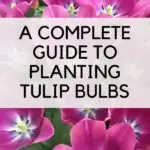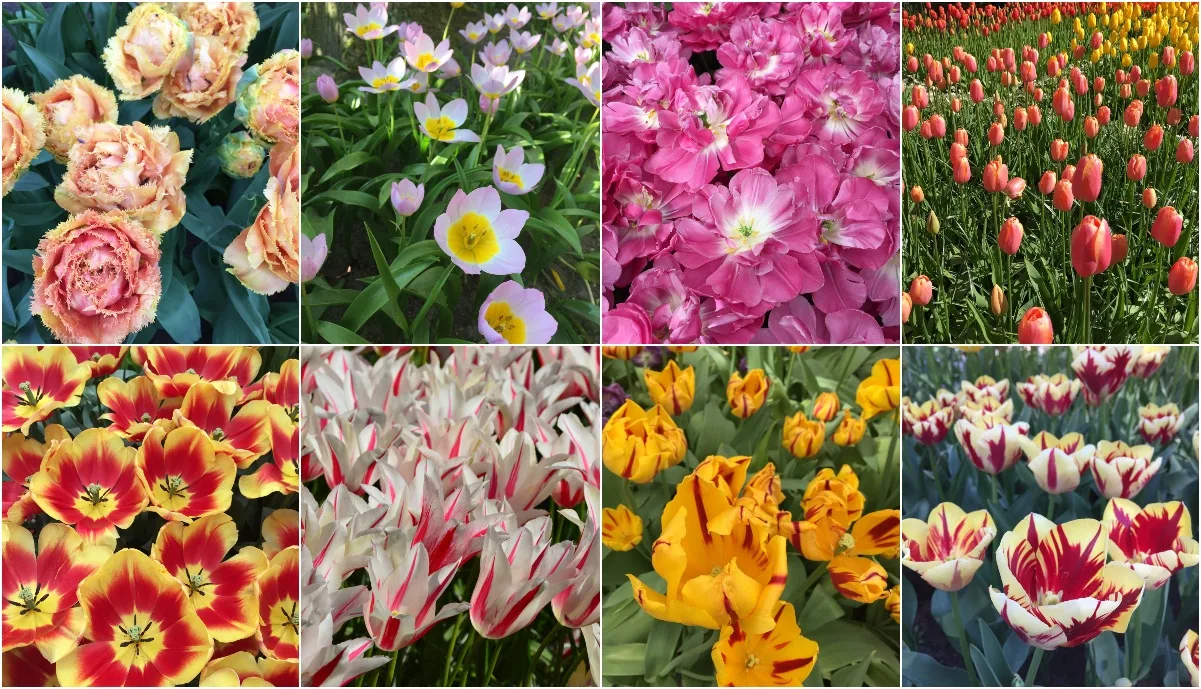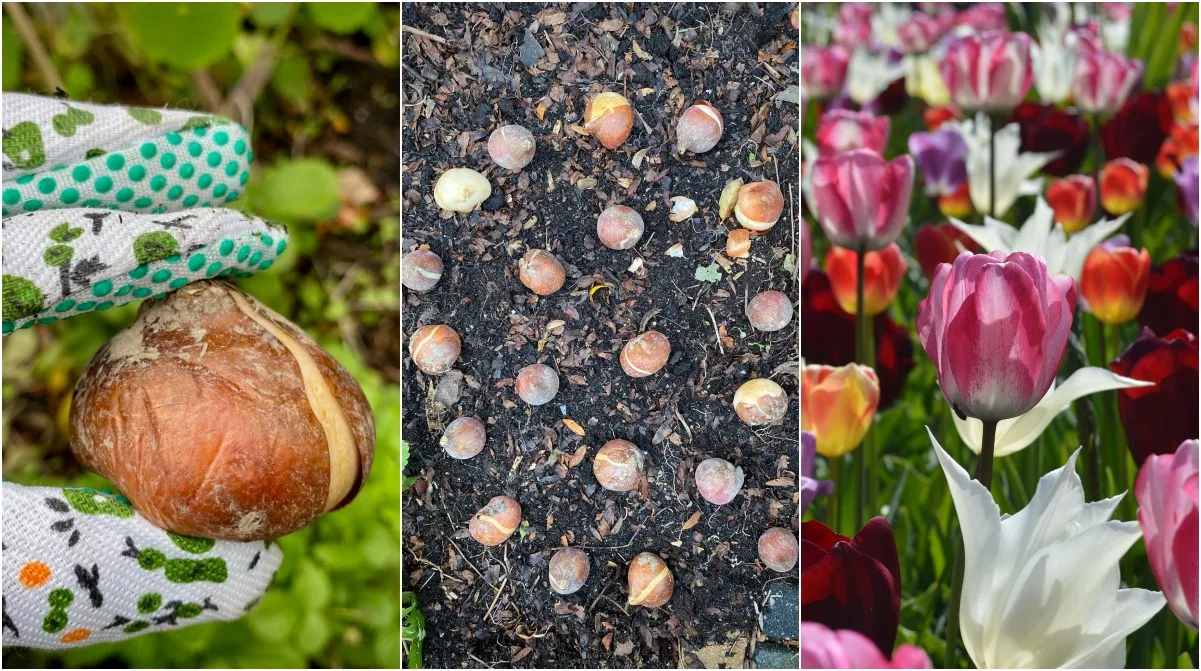
If there’s ever a plant that embodies the feeling of hopefulness, it’s the tulip.
As a history buff, I’m fascinated by how the Dutch Tulip Mania unfolded in the seventeenth century and by the fact that it was the first boom-and-bust cycle recorded in real time. Tulips infected with the tulip breaking virus were traded as a commodity until their prices skyrocketed and the bubble burst. Talk about hope!
As a gardener, I feel that planting tulip bulbs is the ultimate sign of hope for next year’s growing season.
Think about it this way – you bury something in the ground and you don’t see any result for up to six months; then come spring, you’re rewarded with a stunning display of flowers in warm colors and cheerful combinations.
If you’re new to growing tulips, or you want to refresh your knowledge about these beautiful blooms, have a read through this guide on how to get these stunning spring blooms in your garden.
How many types of tulips are there?
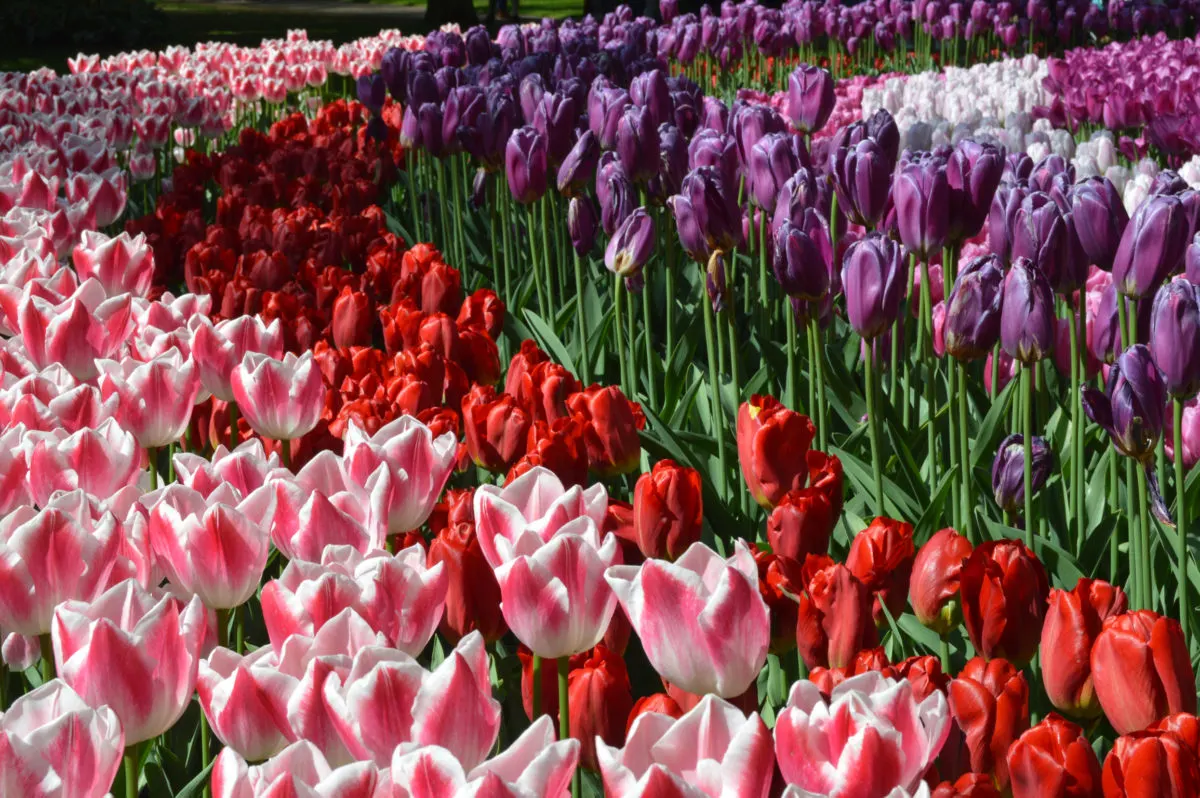
According to Keukenhof Tulip Garden (the largest display tulip garden in the world), there are 15 groups of tulips with thousands of different varieties.
For a complete overview of the types of tulips and some of the most popular varieties, take a look at our guide here: 15 Types Of Tulips & Most Popular Cultivars (With Photos)
When’s the best time to plant tulips?
You should always plant tulip bulbs in the fall, starting in late September until December if your ground hasn’t frozen. Ideally, you should get your bulbs in the ground about 6-8 weeks before the first freeze. These dates will vary depending on your USDA zone (or equivalent).
This timing gives the bulbs enough time to establish feeder roots before they go dormant in the winter. With the help of these first roots, the bulb will stay hydrated and anchored throughout the winter months.
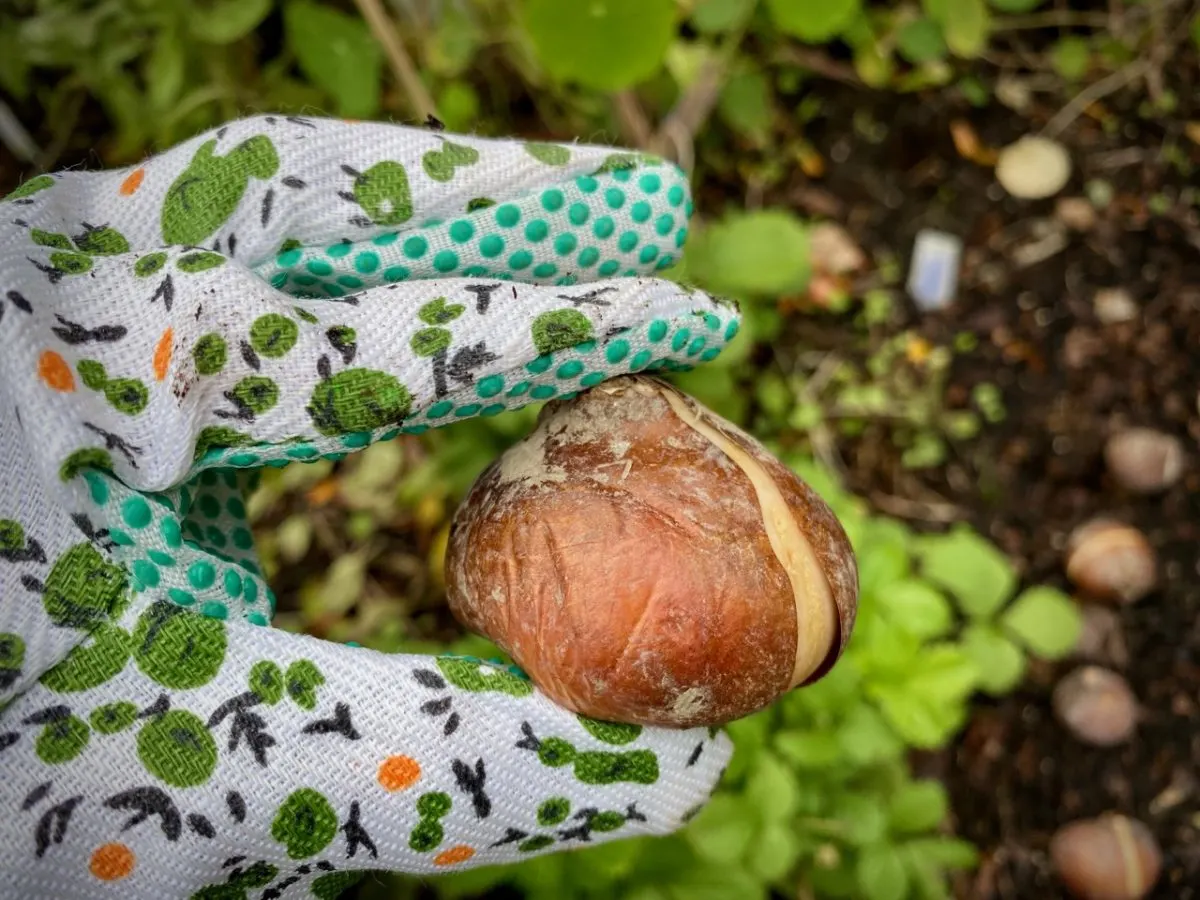
Don’t jump the gun though if you’re having a warm fall. If the soil around the bulbs is too warm, they’ll begin to sprout prematurely and the spring flowering may be compromised. It’s better to err on the side of planting too late than planting too early.
I forgot to plant my tulips! What should I do?
Breathe, you can still plant your tulip bulbs until Christmas if your soil is soft enough to dig into. Most spring bulbs need at least ten weeks of cold temperatures to allow the plant to complete a full blooming cycle in spring. Just make sure you mulch your bulbs well to give them a chance to grow feeder roots if the temperature drops.
How many tulip bulbs should I plant?
This depends on what look you’re going for. Personally, I prefer a more compact look rather than a scattered one.
In previous years, even though I judged my tulip planting to be quite compact, when the blooms came out I realized that I had planted them too far apart for my liking. I think my mistake came from visually assessing the planting distance the way I usually do with perennial plants. But keep in mind that tulips grow one upright flower per bulb, so it won’t get fuller once in bloom (the way perennials do).
Some vendors will calculate for you and package the bulbs accordingly. These bulb mixes at my local garden center are designed to cover one square meter (about ten square feet) using about 60 bulbs (50 tulip bulbs plus 10 anemone bulbs). This is a very generous planting pattern, but it will have a much stronger visual impact than scattered blooms.
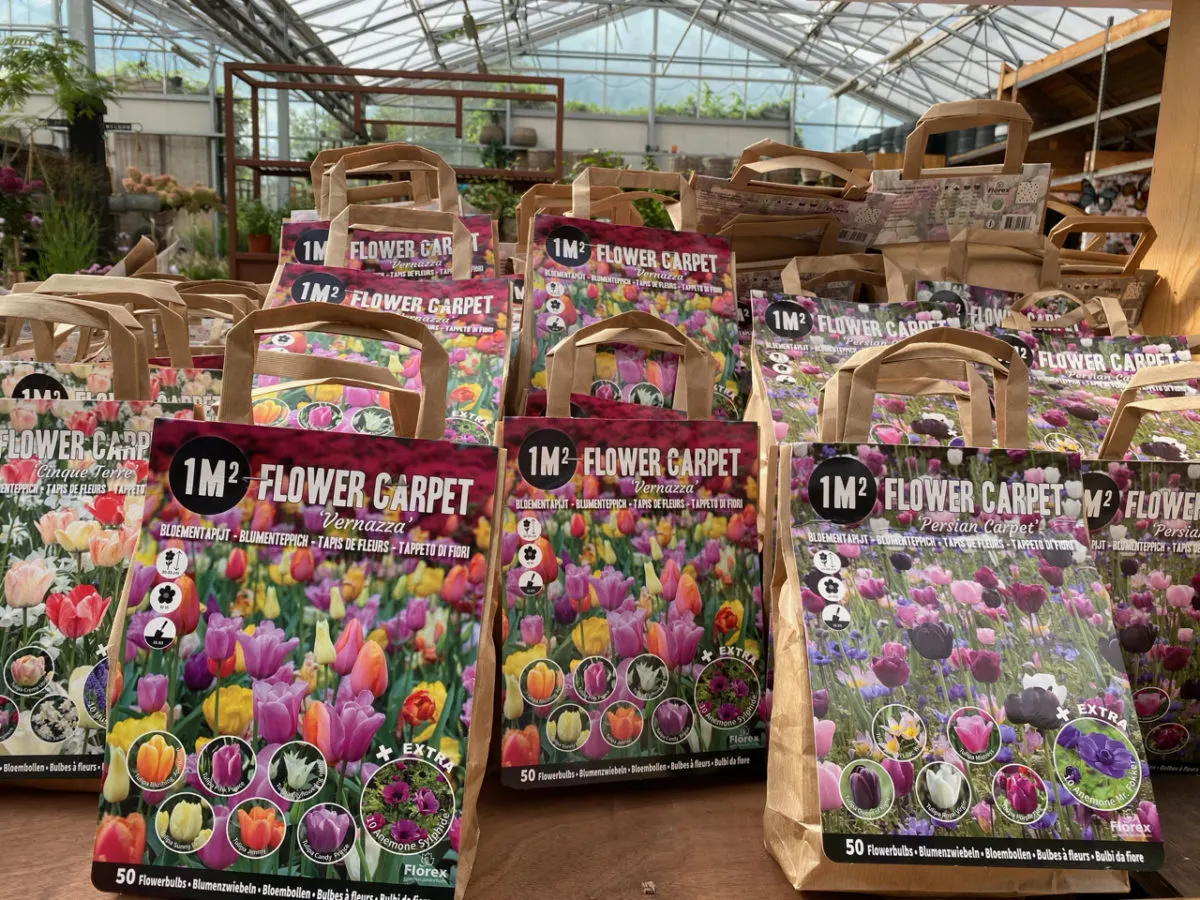
The downside to this method is that it can get pretty pricey. What I’ve decided to do is to keep adding to my bulb collection every year, rather than giving in to the unaffordable temptation of planting them all at the same time. I’m choosing bulbs that I can perennialize and adding a couple of new cultivars every year, gradually expanding my tulip patch every fall.
The recommendation of about 6-9 tulips per square foot assumes that you’re planting nothing but bulbs. If you’re interspersing tulips in your flower beds, you can space the plants about four inches apart.
How deep do I plant tulips?
Plant tulips three times as deep as they are tall. So if your tulip bulb is two inches tall (tip to root), dig a six-inch hole and drop the bulb in it with the tip facing up. Then repeat with the rest of the bulbs.
The purpose of burying bulbs this deep is not necessarily to insulate them from the cold, but to protect them from temperature fluctuations.
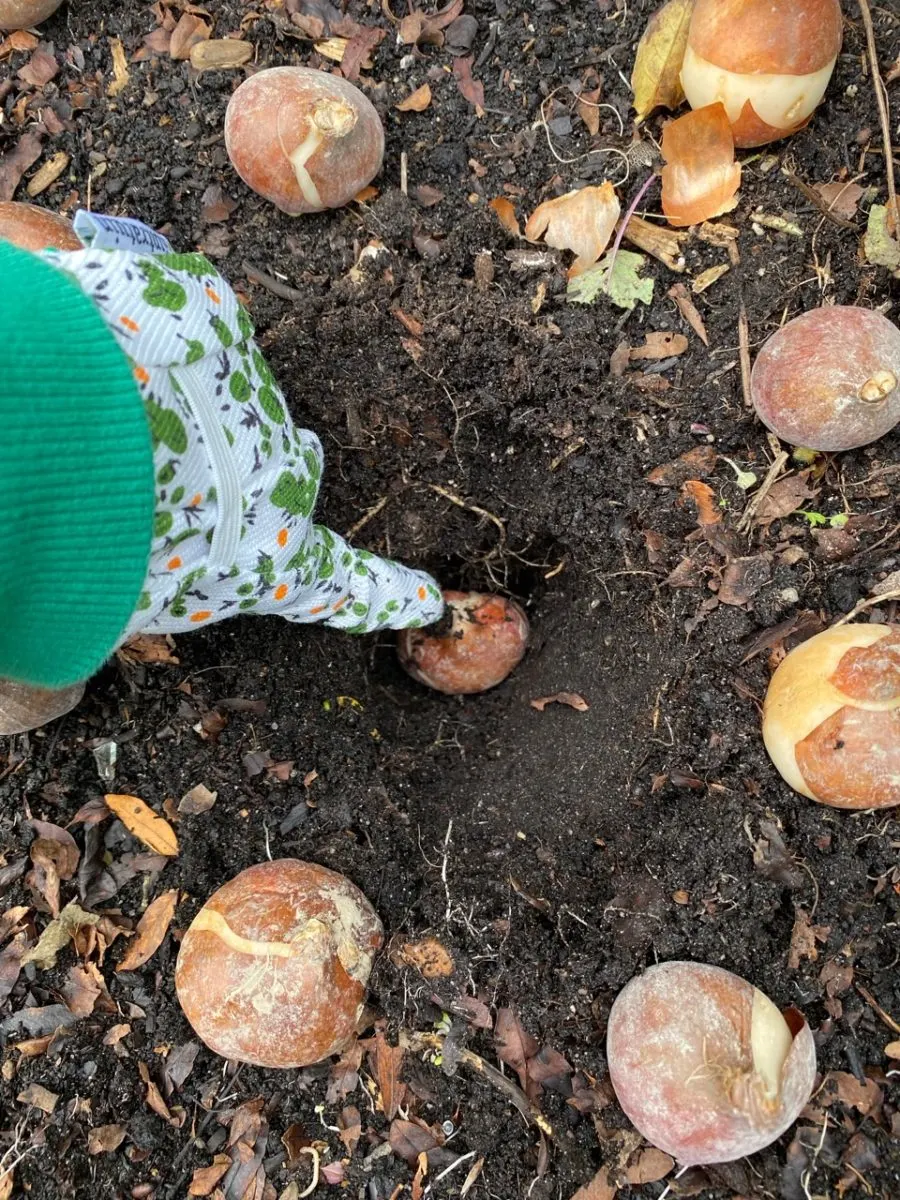
I like to work in batches – first digging the holes, then placing the bulbs in, then covering up everything with soil at the same time. This allows me to assess at a glance how evenly I’m spacing the bulbs.
This fall, I’m attempting a tulip spiral with alternating ‘Grand Perfection’ and ‘Gudoshnik Double Late’. I chose these two types of tulips because they have showy flowers that bloom at the same time and on stems of similar lengths. Whenever I’m creating a pattern, I prefer to first do a mise-en-place of my preferred layout before I plant the bulbs.
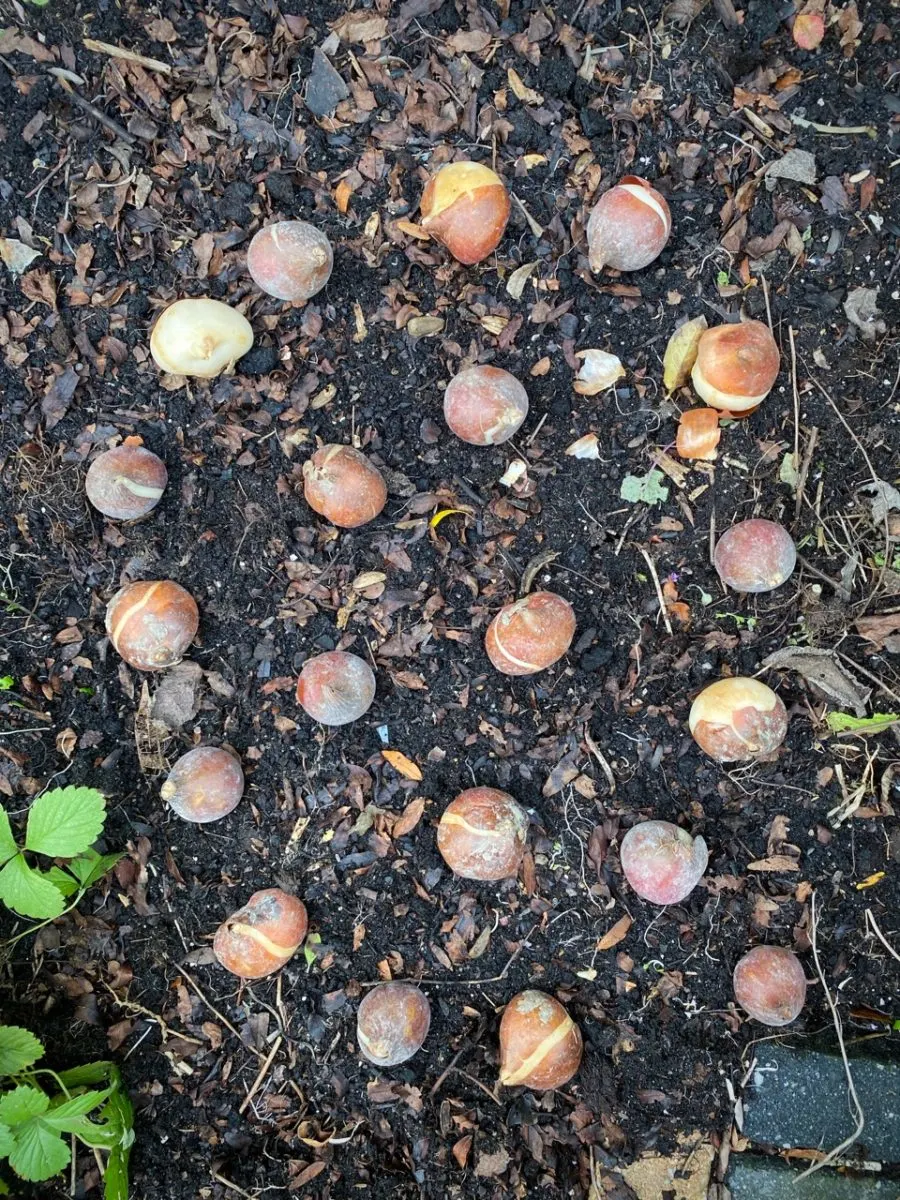
If you’re finding it hard to estimate whether you’re digging at the right depth, get a trowel that comes with inches (or centimeters) etched on it. It’s easy to follow spacing instructions, so this tool takes the guesswork out of the equation.
If you’re planting a lot of scattered bulbs (say, in a lawn), you can use a bulb planting tool. It makes it easier on your wrists to dig into compacted soil. One word of advice though is to make sure that water doesn’t pool at the bottom of the hole when you’re using this tool.
You don’t need to fertilize tulips, no matter what well-meaning merchants might try to sell you. The tulip bulb contains everything in its core to produce a perfect bloom. Feeding tulips will often result in leggy stems (and if you want that, just get taller varieties).
Where should I plant my tulips?
Say it with me: well-draining soil.
It’s really important to plant bulbs in soil that drains quickly after a storm. If the water forms puddles that don’t drain for hours once the rain has stopped, that spot will remain too moist for bulbs to thrive. Not only will they not bloom, but the bulb will split because of too much moisture. Once that happens, the bulb won’t have enough energy to produce blooms.
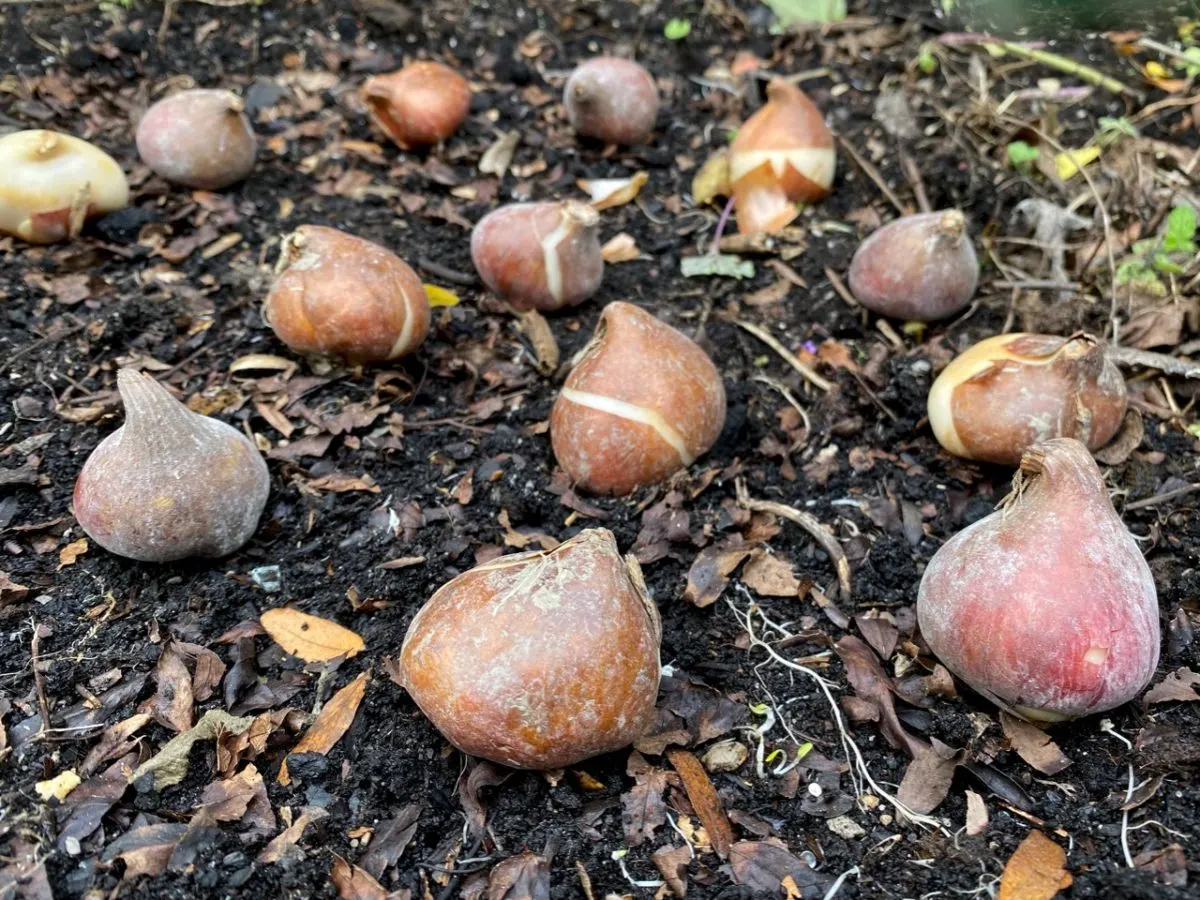
If your soil doesn’t drain and you have no other choice of location, you can try amending the soil with bark, compost, well-rotted leaf mold and even a sprinkle of sand to promote drainage. Work the soil well to dislodge any clumps and make it easier for the feeder roots to go deeper.
When it comes to sunlight availability, spring bulbs do well in full sun (provided you don’t let the soil dry) or dappled shade. If you have a shaded spot that you want to cover in bulbs (say, under a tree or along a shaded alley), opt for the species group of tulips which are very adaptable and resilient.
One useful rule of thumb to remember is that north-facing tulips will bloom later than south-facing tulips. So if you’re looking for a full display, you can plant your late-spring tulips in more sun and your mid-spring tulips in the shade. This way, you might get a chance for the blooming periods to overlap, at least partially.
Can I leave my tulips in the ground?
At their core, tulips as a species are perennial plants. However, due to growers hybridizing them for other features, such as color patterns and height, we mostly treat bulbs as annuals nowadays.
The closer the tulip group is to its Central Asian ancestors, the more likely they are to come back year after year.
If you want to grow tulips as perennials, you should choose from the following groups: botanical (species), Greigii, Kaufmanniana, (some) Darwin hybrids, (some) fringed and (some) Triumph.
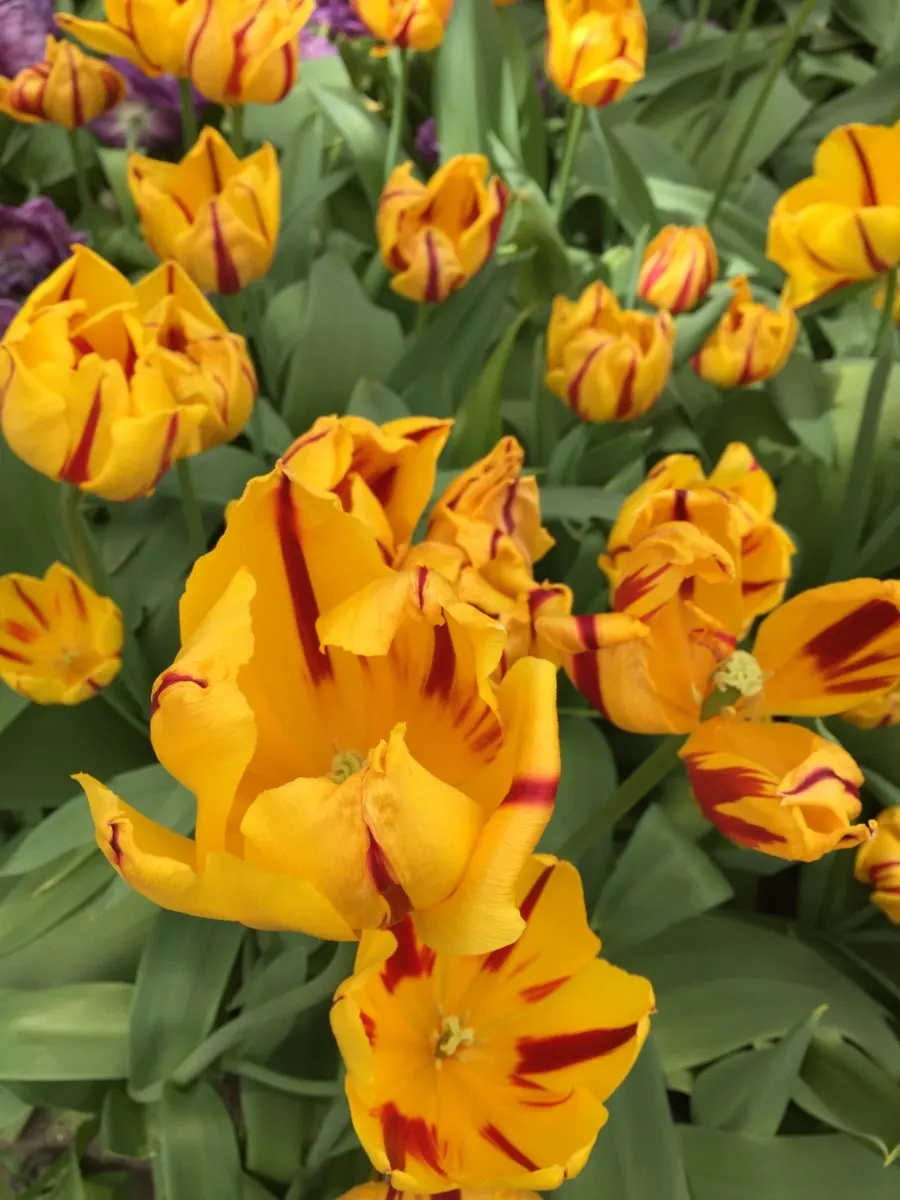
You can leave all your tulips in the ground, of course, but know that after a couple of seasons the blooms will gradually become smaller and less true to the original one you’ve planted. To counteract this, you can keep planting fresh new bulbs around them to keep your spring bulb bed looking colorful and full. I like to call these “insurance bulbs.”
If you decide to lift your short-lived tulips to maximize their chances of reblooming next year, make sure you deadhead the flower before it attempts to go to seed. Then wait until the foliage dies back naturally. Once you dig out the bulb, remove the dead foliage and allow the bulb to dry properly before you store it.
You can store your lifted bulbs over the summer in a cool dark place with good ventilation. Always store your bulbs in paper bags, cardboard boxes or perforated plastic bags.
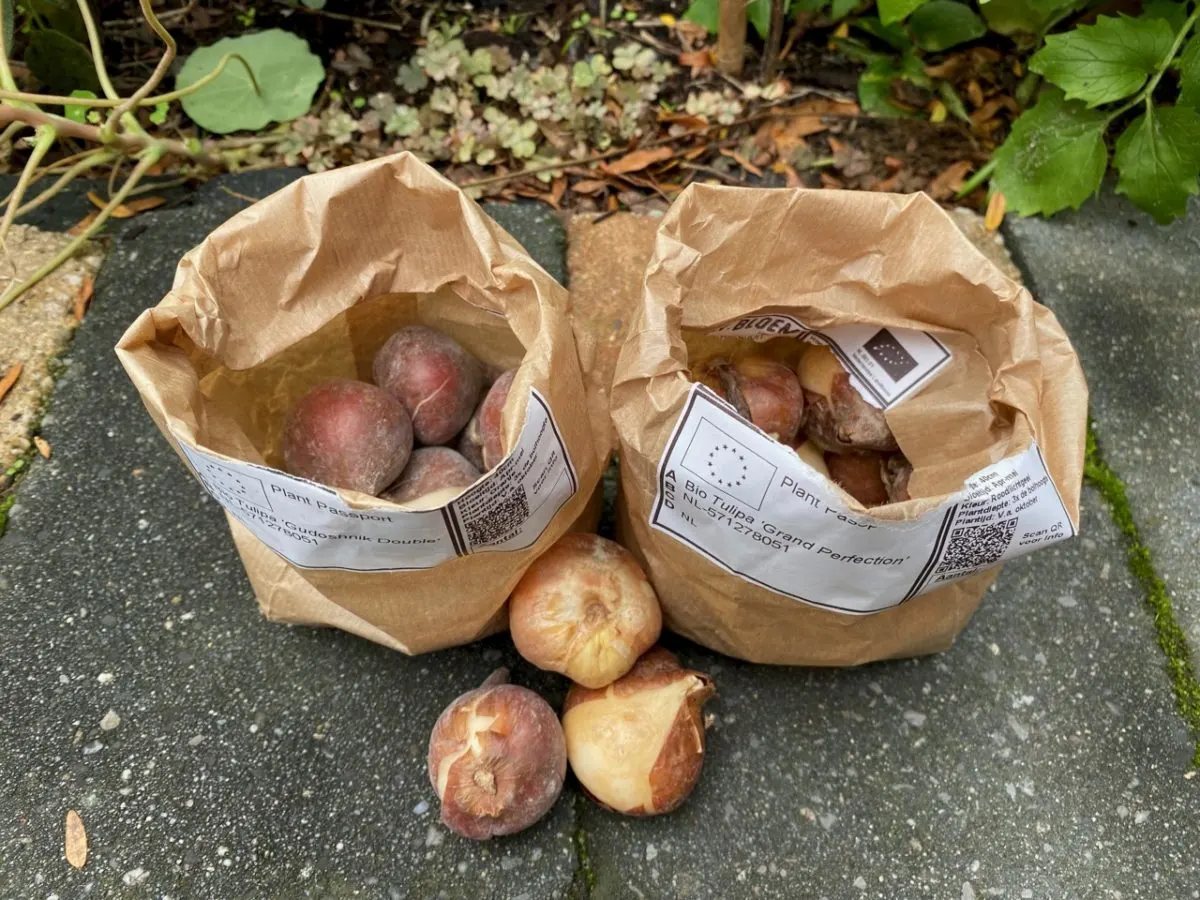
How do I maximize tulip bloom time?
The best way to extend tulip bloom time is to mix bulbs with different blooming times. As you’re planting, simply dump all the bulbs in a bucket or a wheelbarrow, mix them, and start playing “the bulb lottery” by picking the next one to plant at random from the pile.
Otherwise, there’s no magic potion to maximize bloom time. Tulips stay in bloom for as long the bulb has the energy to sustain it, and for most tulips that translates to a couple of weeks at most. This is not something we can control as gardeners. Neither can we control the weather, another important factor in how long the blooms last.
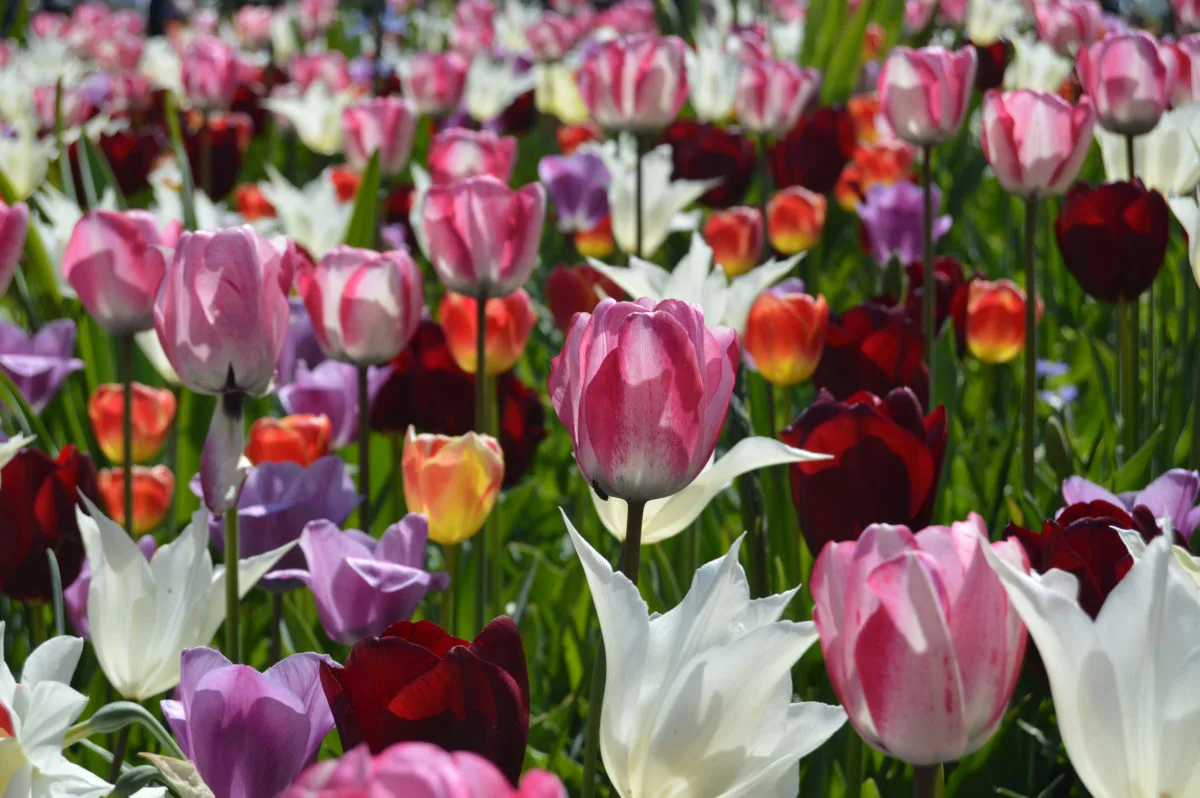
However, what we can control is bulb care. Making sure the bulbs are properly watered during a dry fall ensures that they grow strong enough roots to keep the bulb hydrated and resilient enough for an extended blooming time.
Similarly, making sure that, once the blooms are gone, we leave the foliage on for as long as it needs to die back naturally. This ensures that the bulb stores enough energy through photosynthesis to feed next year’s blooms.
Planting tulips is an exercise in delayed gratification. But once spring rolls around, you’ll be happy you put in the effort.
Choose a tulip variety for your backyard
Whether you want an early blooming or late blooming variety, a short or tall tulip, a variety that can perennialize in your backyard, a traditional looking tulip or a frilly one – there’s a tulip variety for you below.

